 W
WThe 1st Ayrshire and Galloway Artillery Volunteer Corps was formed in 1859 as a response to a French invasion threat. It transferred to the Territorial Force (TF) in 1908 and Its successor units fought with the 52nd (Lowland) Infantry Division in Palestine during World War I, and in North West Europe and Burma during World War II. It continued in the Territorial Army (TA) until amalgamation in 1967.
 W
WThe 1st Cornwall Artillery Volunteers were formed in 1860 as a response to a French invasion threat. They served as a Coast Artillery unit during both World Wars, and also manned batteries serving overseas. The unit continued in existence until the dissolution of Coast Artillery in the UK in 1956.
 W
WThe 1st Cornwall Artillery Volunteers were formed in 1860 as a response to a French invasion threat. They served as a Coast Artillery unit during both World Wars, and also manned batteries serving overseas. The unit continued in existence until the dissolution of Coast Artillery in the UK in 1956.
 W
WThe 1st Devonshire Artillery Volunteers and its successor units served in the British Army's Reserve Forces from 1859 to 1961. During World War I it carried out garrison duty in British India but went on to see active service in the Third Anglo-Afghan War. Converting to an air defence role before World War II its units participated in the Norwegian campaign and the Dunkirk evacuation, the Battle of Britain and then the campaigns in North Africa, Italy, and Burma
 W
WThe 1st East Yorkshire Artillery Volunteers was a part-time unit of Britain's Royal Artillery based in the East Riding of Yorkshire, which also contained sub-units from the North and West Ridings. Created during an invasion scare in 1859–1860, it survived to supply units to the later Territorial Force of the 20th century.
 W
WThe 1st Glamorganshire Artillery Volunteers was formed in 1859 in response to a French invasion threat. Formed as a coast artillery unit, it later became part of the Royal Field Artillery in the Territorial Force and served during both World Wars until amalgamated in 1961.
 W
W266 Battery Royal Artillery is a Royal Artillery unit of the British Army Reserve. It was first formed in Bristol in 1859 and served through World War I as field artillery and World War II as anti-aircraft (AA) artillery.
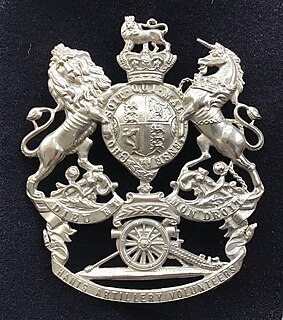 W
WThe 1st Hampshire Artillery Volunteers and its successors were part-time coast defence units of the British Army from 1860 to 1967. Although the units saw no action, they protected the Portsmouth area in both World Wars and supplied trained gunners to siege batteries engaged on the Western Front during World War I. The unit continued in the Territorial Army after World War II.
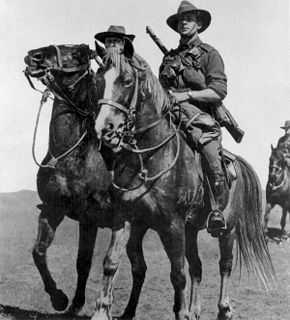 W
WThe 1st Light Horse Brigade was a mounted infantry brigade of the Australian Imperial Force (AIF), which served in the Middle Eastern theatre of World War I. The brigade was initially formed as a part-time militia formation in the early 1900s in New South Wales and then later in Queensland. In 1914, the brigade was re-constituted as part of the AIF and was sent to Egypt. Forming part of the New Zealand and Australian Division, during the Gallipoli Campaign it served in a dismounted role between May and December 1915. After being withdrawn to Egypt it served in the Anzac Mounted Division from March 1916 as part of the Egyptian Expeditionary Force, taking part in the Sinai and Palestine Campaign until the end of the war. It was disbanded in 1919. After the war, the AIF light horse regiments were demobilised and disbanded; however, the brigade briefly existed as a part-time militia formation in Queensland until 1921 when its regiments were reorganised into cavalry brigades.
 W
WThe 1st Sussex Artillery Volunteers was a part-time unit of the British Army's Royal Artillery from 1859 to 1961. Raised as coastal defence artillery, the unit later served as field artillery in Mesopotamia during World War I, and in North Africa, Sicily, Italy and North West Europe during World War II. It carried out a number of roles in the postwar Territorial Army.
 W
WThe 2nd Cinque Ports Artillery Volunteers was a part-time unit of the British Army's Royal Artillery from 1890 to 1955. Raised as coastal defence artillery, it later served as field artillery in Mesopotamia during the First World War and in the Battle of France and Second Battle of El Alamein during the Second World War. Its successor units later operated as medium artillery in North West Europe, and as jungle artillery in Burma. Postwar, it became an anti-aircraft unit.
 W
WThe 2nd Devonshire Artillery Volunteers was a unit of the British Volunteer Force and Territorial Army. The unit and its successors defended Plymouth Dockyard and the Devon coast from 1861 to 1961.
 W
WThe 2nd Glamorganshire Artillery Volunteers was a part-time unit of the British Army that defended the coast of South Wales from 1890 to 1942. Although it never saw action in its coastal defence role, it formed several siege batteries of heavy howitzers for service on the Western Front and Italian Front in World War I.
 W
WThe 2nd Light Horse Brigade was a mounted infantry brigade of the Australian Imperial Force (AIF) which served in the Middle Eastern theatre of World War I. The brigade was initially formed as a part-time militia formation in the early 1900s in New South Wales. In 1914, the brigade was re-constituted as part of the AIF. The brigade first saw action while serving in the Australian and New Zealand Army Corps (ANZAC) during the Gallipoli campaign. After being withdrawn to Egypt in February 1916 they served in the ANZAC Mounted Division from March 1916 as part of the Egyptian Expeditionary Force during the Sinai and Palestine Campaign until the end of the war. After the war, the AIF light horse regiments were demobilised and disbanded; however, the brigade briefly existed as a part-time militia formation in New South Wales until 1921 when its regiments were reorganised into cavalry brigades.
 W
WThe 1st Sussex Artillery Volunteers was a part-time unit of the British Army's Royal Artillery from 1859 to 1961. Raised as coastal defence artillery, the unit later served as field artillery in Mesopotamia during World War I, and in North Africa, Sicily, Italy and North West Europe during World War II. It carried out a number of roles in the postwar Territorial Army.
 W
WThe 3rd Light Horse Brigade was a mounted infantry brigade of the Australian Imperial Force (AIF), which served in the Middle Eastern theatre of World War I. The brigade was initially formed as a part-time militia formation in the early 1900s in Victoria. In 1914, the brigade was re-constituted as part of the AIF. The brigade first saw action while serving with the Australian and New Zealand Army Corps during the Gallipoli campaign where they were noted for their attack during the Battle of the Nek. After being withdrawn to Egypt in February 1916 they were involved in the Sinai and Palestine Campaign until the end of the war. They were attached to a number of different formations being part of the Anzac Mounted Division in March 1916 and the Australian Mounted Division in June 1917, who they remained with until the end of the war. After the war, the AIF light horse regiments were demobilised and disbanded; however, the brigade briefly existed as a part-time militia formation in New South Wales until 1921 when its regiments were reorganised into cavalry brigades.
 W
WThe Metropolitan Artillery Volunteers was a part-time unit of the British Volunteer Force formed in the London area in 1861. It was designated the 3rd Middlesex Artillery Volunteers and went on to become the 5th London Brigade, Royal Field Artillery in the Territorial Force. It provided two active service units in World War I, which saw action on the Western Front. Just before World War II it again spun off a duplicate regiment, each taking the '5th London' subtitle. Both regiments saw widely varied service during the war. The regiment later provided an airborne artillery unit in the Territorial Army of the 1950s.
 W
WThe 4th Lancashire Artillery Volunteers, later renamed to the 4th West Lancashire Brigade, known as 'The Old 4th', was a part-time unit of the British Army's Royal Artillery founded in Liverpool in 1859. It served on the Western Front during World War I, one of its members winning the Victoria Cross at Cambrai. Between the world wars the unit pioneered mechanical traction methods. During World War II it formed three regiments that saw action at Dunkirk, in East Africa, on Crete, at Tobruk, in Burma, and in the final campaigns in Italy and North West Europe. It continued in the post-war Territorial Army until 1973.
 W
WThe 4th Light Horse Brigade was a mounted infantry brigade of the Australian Imperial Force (AIF) serving in the Middle Eastern theatre of World War I. The brigade was initially formed as a part-time militia formation in the early 1900s in Victoria and Tasmania. After the outbreak of World War I, the brigade was raised as a volunteer formation within the AIF in March 1915 and shipped to Egypt and was broken up in August 1915 to provide dismounted reinforcements to other light horse formations already deployed to Gallipoli. Reformed in February 1917, the brigade was assigned to the Imperial Mounted Division, which formed part of the Egyptian Expeditionary Force, and in June 1917 transferred to the Australian Mounted Division, where it served in the Sinai and Palestine Campaign until the end of the war. After the war, the AIF light horse regiments were demobilised and disbanded; however, the brigade briefly existed as a part-time militia formation in New South Wales until 1921 when its regiments were reorganised into cavalry brigades.
 W
WThe 5th Light Horse Brigade was a mounted infantry brigade of the First Australian Imperial Force (AIF) that served during World War I. The brigade was initially formed as a part-time militia formation in the early 1900s in Queensland. During World War I, the brigade was formed in Palestine in July 1918 following the disbandment of the Imperial Camel Corps. At this time, the brigade consisted of two Australian Light Horse regiments and a French cavalry regiment, and was supported by British and New Zealand artillery and machine gun troops. It served in the Middle Eastern theatre of World War I in the Sinai and Palestine Campaign as part of the Australian Mounted Division, but only saw limited operations before the war ended, taking part in the capture of Damascus in September and October 1918. After the war, the AIF light horse regiments were demobilised and disbanded; however, the brigade briefly existed as a part-time militia formation in Victoria until 1921 when its regiments were reorganised into cavalry brigades.
 W
WThe 3rd West Lancashire Artillery was a volunteer unit of Britain's Territorial Force recruited from Liverpool that saw action during the First World War, distinguishing itself at the Battle of the Avre. During the Second World War, it served in the air defence and medium artillery roles at home and in the Far East. Its successor unit continues to serve as a battery in the modern Army Reserve.
 W
WThe 7th Gurkha Rifles was a rifle regiment of the British Indian Army, before being transferred to the British Army, following India's independence in 1947 and after 1959 designated as the 7th Duke of Edinburgh's Own Gurkha Rifles
 W
WThe 8th Lancashire Artillery Volunteers was a unit of the British Volunteer Force raised in Liverpool, Lancashire, in 1860. Later it transferred to the Territorial Force as a brigade of heavy artillery, and its batteries fought in many of the great battles on the Western Front in World War I.
 W
WThe 11th Infantry Regiment, King's Close Bodyguard is a King's Guard regiment under the 1st Infantry Division, King's Guard of the Royal Thai Army. The regiment is divided into three battalions, all of them based in Bangkok. Formerly having a duty to guard the palace in the reign of King Mongkut to practice military subjects in order to perform effective and set up a Royal Palace Guard Regiment or the army surrounded the palace with the blue uniform is likely to come from the color of Krom Wang uniforms. The reign of King Chulalongkorn please King Vajiravudh, when he was the Siamese Crown Prince as a special colonel of the regiment which makes the unit have a bond with King Vajiravudh. Later, when King Vajiravudh ascended the throne he waas accepted as a special commander of the Regiment which His Majesty's color is blue.
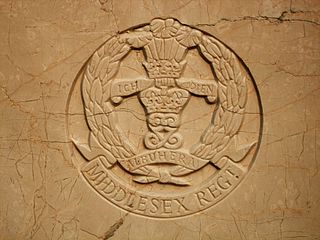 W
WThe 9th Battalion, Middlesex Regiment was an infantry battalion of the British Army. Part of the Volunteer Force, later the Territorial Force, the battalion was part of the Middlesex Regiment and recruited from the north-western suburbs of London. It served as infantry in the Mesopotamian campaign during World War I and as an air defence regiment during and after World War II.
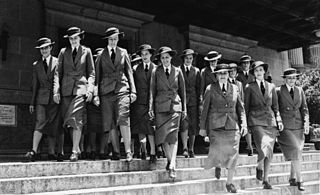 W
WThe Australian Army Nursing Service (AANS) was an Australian Army Reserve unit which provided a pool of trained civilian nurses who had volunteered for military service during wartime. The AANS was formed in 1902 by amalgamating the nursing services of the colonial-era militaries, and formed part of the Australian Army Medical Corps. During World War I, more than 2,286 women joined the AANS AIF for overseas service. Hundreds more served in the AANS AMF on home service in Australia. After WWI, the AANS reverted to a Reserve. The AANS was mobilised again during World War II, and many of its members served overseas. Following the war several AANS nurses were posted to Japan as part of the British Commonwealth Occupation Force. The service was renamed the Royal Australian Army Nursing Service (RAANS) in November 1948 and became part of the regular Army the next year. In 1951 the RAANS achieved corps status, and became the Royal Australian Army Nursing Corps.
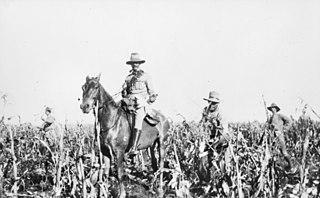 W
WThe Australian Commonwealth Horse (ACH) was a mounted infantry unit of the Australian Army formed for service during the Second Boer War in South Africa in 1902 and was the first expeditionary military unit established by the newly formed Commonwealth of Australia following Federation in 1901. Over 4,400 men enlisted in the ACH in three contingents, with troops and squadrons raised in each state and combined to form battalions. Eight battalions were raised, with the first arriving in Durban in March 1902. The 1st and 2nd battalions saw limited active service, conducting patrols against the Boers during the last great drives that ultimately ended the war. The war ended before the remaining battalions arrived to see action, and by the time peace came on 31 May 1902, the majority of the third contingent, consisting of the 5th, 6th, 7th and 8th Battalions, still remained at sea bound for South Africa. The ACH suffered no fatal casualties in action, although 28 men died from illness.
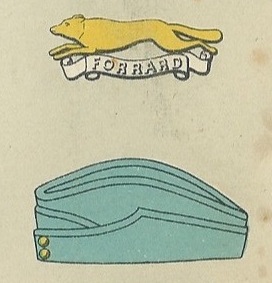 W
WThe East Riding of Yorkshire Yeomanry was a unit of the British Army formed in 1902. Units of Yeomanry Cavalry were raised in the East Riding of Yorkshire in the 18th and early 19th centuries at times of national emergency: the Jacobite Rising of 1745, the French Revolutionary Wars and the Napoleonic Wars. These were stood down once each emergency was over. The East Riding of Yorkshire Yeomanry, was established in 1902, and this saw action during the First World War both in the mounted role and as machine gunners.
 W
WThe East Riding of Yorkshire Yeomanry was a unit of the British Army formed in 1902. Units of Yeomanry Cavalry were raised in the East Riding of Yorkshire in the 18th and early 19th centuries at times of national emergency: the Jacobite Rising of 1745, the French Revolutionary Wars and the Napoleonic Wars. These were stood down once each emergency was over. The East Riding of Yorkshire Yeomanry, was established in 1902, and this saw action during the First World War both in the mounted role and as machine gunners.
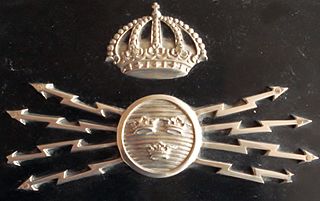 W
WField Telegraph Corps, designation Ing 3, was a Swedish engineering unit within the Swedish Armed Forces which served in various forms between 1902 and 1937. The main part of the unit was located in the Stockholm Garrison in Stockholm, Uppland.
 W
WThe 157th Brigade was an infantry brigade of the British Army. The brigade fought in both World War I and World War II, assigned to 52nd (Lowland) Division.
 W
WThe Home Fleet was a fleet of the Royal Navy that operated from the United Kingdom's territorial waters from 1902 with intervals until 1967.
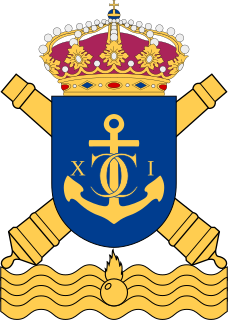 W
WThe Karlskrona Coastal Artillery Regiment, designation KA 2, was a Swedish Navy coastal artillery regiment of the Swedish Armed Forces which operated between 1902 and 2000. The unit was based in Karlskrona.
 W
WThe King's African Rifles (KAR) was a multi-battalion British colonial regiment raised from Britain's various possessions in East Africa from 1902 until independence in the 1960s. It performed both military and internal security functions within the colonial territories, and served outside these territories during the World Wars. The rank and file (askaris) were drawn from native inhabitants, while most of the officers were seconded from the British Army. When the KAR was first raised there were some Sudanese officers in the battalions raised in Uganda, and native officers were commissioned towards the end of British colonial rule.
 W
WThe North Irish Horse is a yeomanry unit of the British Territorial Army raised in the northern counties of Ireland in the aftermath of the Second Boer War. Raised and patronized by the nobility from its inception to the present day, it was one of the first non-regular units to be deployed to France and the Low Countries with the British Expeditionary Force in 1914 during World War I and fought with distinction both as mounted troops and later as a Cyclist Regiment, achieving 18 battle honours. The regiment was reduced to a single man in the inter war years and re-raised for World War II, when it achieved its greatest distinctions in the North African and Italian campaigns. Reduced again after the Cold War, the regiment's name still exists in B Squadron, the Scottish and North Irish Yeomanry and 40 Signal Squadron, part of 32 Signal Regiment.
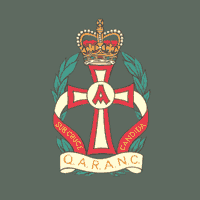 W
WQueen Alexandra's Royal Army Nursing Corps is the nursing branch of the British Army and part of the Army Medical Services.
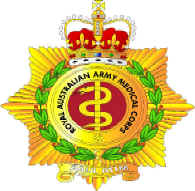 W
WThe Royal Australian Army Medical Corps (RAAMC) is the branch of the Australian Army responsible for providing medical care to Army personnel. The AAMC was formed in 1902 through the amalgamation of medical units of the various Australian colonies and was first deployed to South Africa as a small detachment of personnel supporting the Australian Commonwealth Horse during the Second Boer War. The corps has participated in every Australian Army operation since then, including wars and peacekeeping operations. The "Royal" prefix was granted in 1948.
 W
WThe Royal Australian Engineers (RAE) is the Military engineering corps of the Australian Army. The RAE is ranked fourth in seniority of the corps of the Australian Army, behind the Staff Cadets, Armoured and Artillery Corps. The corps was formed by the amalgamation of the various colonial engineer corps of the states and territories of Australia in 1902 and since then has served in various conflicts including World War I, World War II and the Vietnam War. The corps has also served on numerous peacekeeping operations and was heavily involved in the Australian contribution to the war in Afghanistan.
 W
WThe 156th Brigade was an infantry brigade formation of the British Army. The brigade saw active service in both World War I and World War II with the 52nd (Lowland) Division.
 W
WThe South Irish Horse was a Special Reserve cavalry regiment of the British Army. Formed on 2 January 1902 as the South of Ireland Imperial Yeomanry. It was renamed as the South Irish Horse from 7 July 1908 and transferred to the Special Reserve (Cavalry). Having taken part in the fighting of the First World War, it was disbanded in 1922.
 W
WThe Transvaal Scottish Regiment is an infantry regiment of the South African Army. As a reserve unit, it has a status roughly equivalent to that of a British Army Reserve or United States Army National Guard unit.
 W
WThe United States Asiatic Fleet was a fleet of the United States Navy during much of the first half of the 20th century. Before World War II, the fleet patrolled the Philippine Islands. Much of the fleet was destroyed by the Japanese by February 1942, after which it was dissolved and incorporated into the naval component of the South West Pacific Area command, which eventually became the Seventh Fleet.
 W
WThe Uppland Regiment, designations Ing 3, S 1 and S 1/Fo 47, was a Swedish Army signal regiment that traced its origins back to the 19th century. It was disbanded in 2006. The regiment was garrisoned in Uppland.
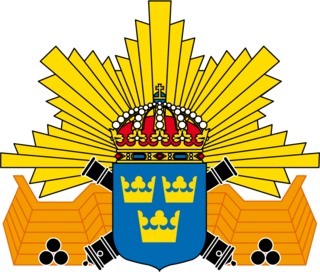 W
WThe Vaxholm Coastal Artillery Regiment, designation KA 1, was a Swedish Navy coastal artillery regiment of the Swedish Armed Forces which operated between 1902 and 2000. The unit was based at Rindö in the Stockholm archipelago in Uppland.